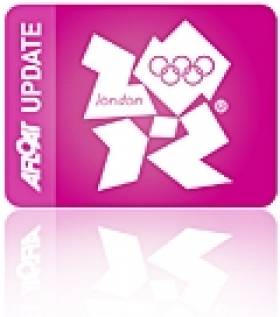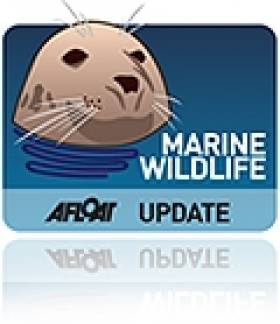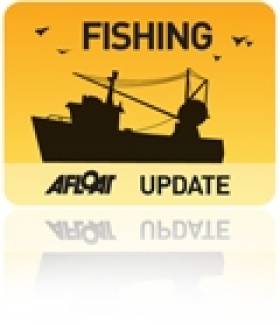Displaying items by tag: Menai Strait
#NewsUpdate - The First Minister of Wales, Carwyn Jones who visited Dun Laoghaire last week for the RMS Leinster centenary, the following day paid a visit to Anglesey in north Wales to announce the Purple option as the preferred route for the third Menai Strait (Afon Menai) crossing.
According to the Welsh Government the Purple option would see a new bridge constructed to the east of the existing Britannia Bridge. Additional facilities for pedestrians and cyclists will be included as part of the scheme.
An appraisal of the options revealed the Purple option provides the highest economic benefits, offers ‘high’ value for money and is the best performing in terms of highway alignment. It was also the most popular option of the public consultation with 25 per cent of respondents selecting it as their first choice.
As part of the next stages, a procurement exercise will take place to appoint Technical Advisors to develop the preliminary design and prepare for publication of draft Orders and an Environmental Statement.
Further analysis is also required as part of the next stage of development to determine which form of bridge is most suitable. The cost of the structure is dependent on this analysis.
First Minister Carwyn Jones said: “The A55 is important locally, nationally and internationally. It provides the main economic artery for North Wales and connects the region with the rest of Wales, the UK and Europe. (Afloat adds see related story on Brexit and the A55)
“The Britannia Bridge is the only section of the route which is single carriageway and we know this reduction in lanes leads to congestion at peak times and during the tourist seasons. There is very strong case for increasing capacity across the Menai and I am delighted the Welsh Government is taking action to address the issue.
“Based on the appraisal undertaken on the options, the Purple Option performs best and would be vital in improving journey times, strengthening the A55’s resilience, and ensuring safer travel across the Menai Strait.
“It will also provide economic benefits and ensure the route is fit for purpose as traffic volume is expected to increase over the years to come.”
For more on the development, click here.
RNLI To Play Big Part in Olympic Torch Relay
#OLYMPICS 2012 - The RNLI will play a "key role" during the Olympic torch relay ahead of the London games this summer, as Yachting and Boating World reports.
On 28 May the Olympic torch is set to visit Anglesey in north Wales, when it is taken along the Menai Strait on board the RNLI's Annette Mary Liddington.
The torch will again be carried by RNLI volunteers on 18 July when it is ferried to shore from a tall ship in Dover harbour aboard the all-weather lifeboat City of London II.
Dover RNLI's operations manager Roy Couzens said: “We are very much looking forward to being involved on the day – and believe me, when that torch is at sea in our lifeboat, it couldn’t be in safer hands!”
The Olympic torch relay begins in Plymouth on 19 May and finishes at the Olympic Stadium on 27 July. Its two-month-long journey will take it throughout Britain and Northern Ireland, and includes a visit to Dublin on Wednesday 6 June.
An interactive map of the complete torch relay route is available on the official London 2012 website HERE.
Work Begins to Eliminate Sea Squirts in North Wales
#MARINE WILDLIFE - Work on exterminating sea squirts at a marina in north Wales has begun.
The £250,000 (€301,000) project by the Countryside Council for Wales involves attaching giant bags to the subsurface structures around the marina in Holyhead, which is hoped will stop the clean flow of water to the sea squirts, causing them to suffocate and die.
Marine biologist Rohan Holt, who is managing the project, said: “If we successfully eradicate the sea squirt, we will work hard to make sure that it does not recolonise.
"This will mean careful monitoring in Holyhead marina and other marinas and popular mooring areas throughout Wales to check that it hasn’t reappeared."
The sea creature threatens shellfish by spreading like a blanket across the seabed and other surfaces.
As previously reported on Afloat.ie, colonies of the invasive Japanese sea squirt are posing a throat to mussel and scallop bed in the Menai Strait between Anglesey and the mainland.
Boats from Ireland have been blamed for carrying the invasive pest into Holyhead.
The Daily Post has more on the story HERE.
Are Irish Boats Responsible for Welsh Sea Squirt Invasion?
#MARINE WILDLIFE - Colonies of the invasive Japanese sea squirt are posing a threat to mussels and scallops in north Wales - and Irish boats are to blame, according to the Daily Post.
The sea creature - which threatens shellfish by spreading like a blanket across the seabed and other surfaces - has been discovered in Holyhead marina, allegedly carried in on the hulls of boats from Ireland.
And fears are growing that if the marine pest spreads to the Menai Strait, the effect on the local shellfish industry could be "disastrous".
To combat the problem once and for all, the Countryside Council for Wales will spend £250,000 of Welsh government funding on an extermination project at the marina, using plastic bags to smother the sea squirts and setting up quarantine facilities for incoming vessels.
The project is expected to be completed by the end of the year.
Mussel Dredgers Make a Fleeting Trawl of Dalkey Sound
Two mussel dredger-trawlers made a rare transit of Dalkey Sound, last Friday, writes Jehan Ashmore.
The sound which is located to the south of Dublin Bay is not used by commercial traffic but is frequented by pleasure-craft, local fishing boats from Dun Laoghaire. In addition to occasional traffic by the Irish Naval Service, Marine Institute research vessel RV Celtic Voyager, the GSI's RV Keary and foreign tall-ships.

Dublin Bay. Photo Jehan Ashmore/ShipSNAPS
The vessels were making a southerly direction as they headed across Dublin Bay towards Dalkey Island. Mytilus lowered a mussel cage bucket into the sound which was dragged on two separate occasions over a short distance running parallel between the island and the coast.
The operation was all too brief as the Mytilus then proceeded into Killiney Bay followed closely astern by Branding. Upon entering the neighbouring bay, both vessels conducted dredging activity before continuing south beyond Bray Head.
Mussel grounds are located throughout certain hotspots in the Irish Sea and earlier this month, it is reported that there was a notable increase in mussel dredgers in Bangor, Northern Ireland. The dredgers were the Mytilus and Branding which berthed at the Co. Down harbour after a lengthy period of relative inactivity.
Mytilus was built in The Netherlands by Scheepwerf Van Os Yerseke B.V. and appeared in an episode of the successful BBC TV series 'Coast'. At the time of the broadcast she was registered at Beaumaris, Anglesey and was seen working in the northern approaches of the Menai Straits. The fishery grounds are ideally suited for the growing processes required in farmed mussel production.
Branding was also built by a Dutch shipyard, Kooieman in 1988 and her design is typical of the mussel dredgers based in Wexford. The market for mussels is mainly from the northern European countries of Belgium, France and the Netherlands.
- Dublin Bay
- Coast
- Marine Institute
- Northern Ireland
- naval service
- Dublin Bay News
- Anglesey
- Ports and Shipping News
- Island News
- RV Celtic Voyager
- TallShips
- RV Keary
- Geological Survey of Ireland
- GSI
- Mussel dredgers
- Mussel trawlers
- Mytilus
- Branding
- Dalkey Sound
- Fishery
- Menai Strait
- Beaumaris
- Banger
- Fish news
- BBC
- BBC TV series 'Coast'
- Belfastregistered
- Wexfordregistered
- Dutchbuilt
- Mussel markets
- Killiney Bay
- Bray Head

































































